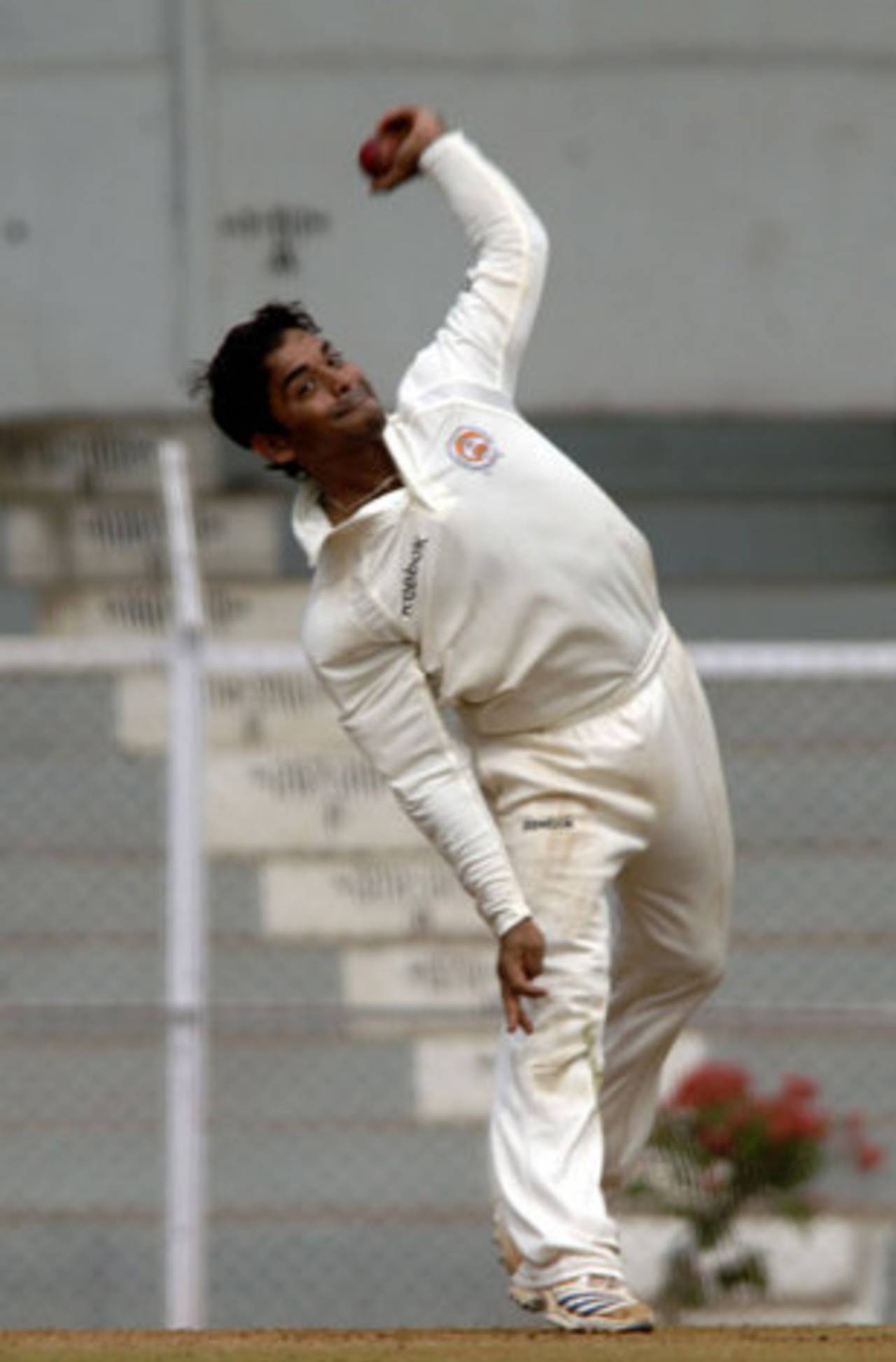Three cheers for the crackdown on chucking
India seem to have made a start to combat illegal actions by allowing umpires to call bowlers on the field
Harsha Bhogle
20-Nov-2009

Rajesh Pawar is one of a bunch of players to have been no-balled for suspect actions this season • ESPNcricinfo Ltd
So umpires in India have started calling bowlers for chucking, and it is nice to see a forgotten law being implemented. Some bowlers, especially those who have played first-class cricket for eight or 10 years, might choose to disagree with the current practice. They are entitled to be a bit confused, but really, in our part of the world we have no alternative. In law, in spirit and in fairness, bowling has to be a straight-arm exercise, and that definition has been mutilated over the years. I suspect the reason umpires have started calling bowlers is not because, during an off-season revision, they discovered a law that seemed abandoned, or because they feel very strongly about it, but simply because there is now a list of offenders and umpires have been given the freedom to call them. It is a welcome change.
Bowlers might complain that they were fine all this time and that it is a bit unfair to call them now. But the law hasn't changed, merely the tools for its implementation. With fixed cameras at every first-class game, there is no place to hide anymore, and in any case the argument against unfairness suffers when confronted with the number of wickets that have been obtained with illegal actions over the years. In truth it had become an epidemic and had reached a stage where if we saw a finger spinner, rather than look at how good he was, we were overjoyed that he actually bowled with a straight arm. That is exactly the feeling I had when I first saw Shakib Al Hasan, the talented Bangladeshi cricketer. That he was a good bowler was almost secondary; that he didn't bend his arm was a surprise.
The idea of calling a bowler on the field is sound for at least a couple of reasons. The current procedure at the ICC is cumbersome and has an in-built failure mechanism. Umpires can only report bowlers, and if they report them frequently enough (and they can keep bowling till then), the bowlers have to, after undergoing remedial action, demonstrate the legality of their action before cameras, in an artificial situation. That is easily done. Now umpires are looking at what a bowler does in tense, sometimes desperate, situations, and that is the best indicator of how clean his action is at that moment. A bowler might bowl five clean deliveries and let one slip through. Only the on-field umpires can catch the moment.
Now umpires are looking at what a bowler does in tense, sometimes desperate, situations, and that is the best indicator of how clean his action is at that moment. A bowler might bowl five clean deliveries and let one slip through. Only the on-field umpires can catch the moment
India has actually done a commendable job by shortlisting bowlers with suspect actions, based on video footage, inviting them to the National Cricket Academy for remedial action and warning them that future transgressions will invite a no-ball call from an umpire. Bowlers therefore are aware that they are under the scanner, and that, in effect, takes much of the sting out of their argument. Now if everybody took care of this at domestic level, we would have few problems at the international level, where currently bowlers seem to enjoy greater latitude.
What this tells me is that intent is often the starting point, and therefore the stumbling block, for change. Intent has led to this action against one of the two epidemics in our cricket. Now we must look at the second - the problem with cricketers' ages. When I see the age against a player's name on some of the graphics, I cringe. It is embarrassing. In all fairness, once players are playing international cricket it shouldn't matter what number goes against their name in the age column, since it is one player's ability versus another. And irrespective of what a certificate says, the body knows its real age and so it knows when to send out the right signals. The problem is at the Under-19 level and lower, where you see players of every vintage on the field.
So either we crack down on players very early - difficult because local administrators and doctors are pretty strong and willing accomplices, or we reduce the importance given to Under-19 cricket. Today, because of the attention, and the resulting monetary benefit, there is a temptation to stay 19 for just a little while longer! It is unfair on genuine 17-year-olds because a two- or three-year age gap can be very large at that level.
I'm waiting to see a news report that says an Under-19 cricketer was banned for three years for being found over-age.
Harsha Bhogle is a commentator, television presenter and writer